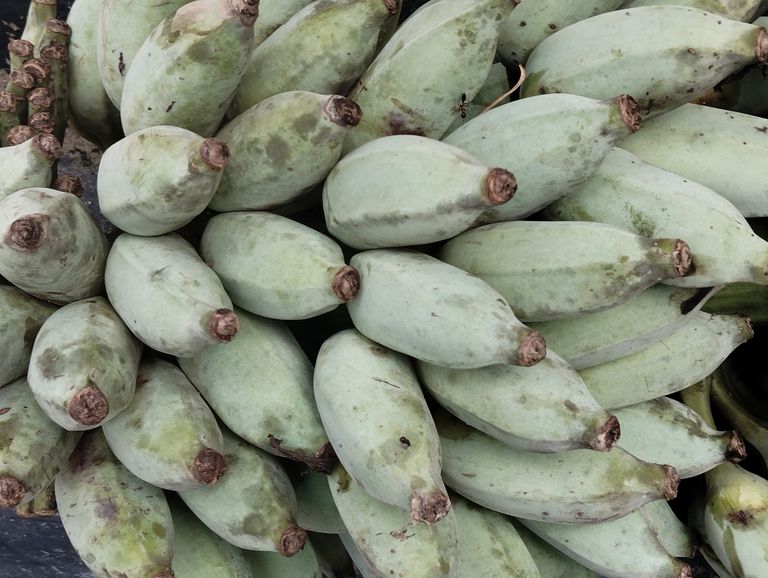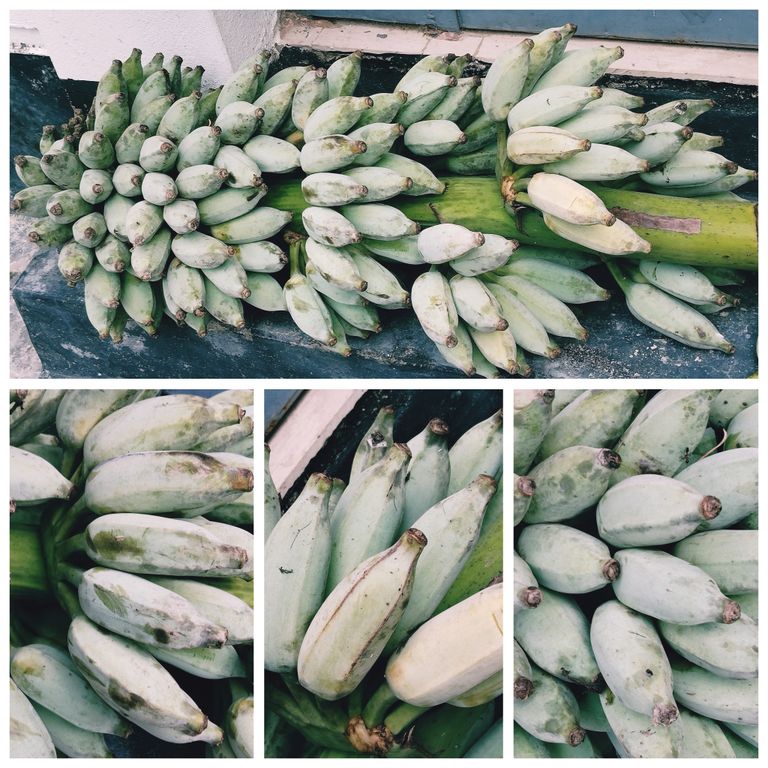
The Art of Folding Betel Leaves: A Step-by-Step Guide.
Betel leaves, known as "paan" in South Asia, have been an integral part of culture, tradition, and hospitality for centuries. Beyond their use in ceremonial practices, betel leaves have numerous medicinal properties and are often chewed with various ingredients such as areca nuts, slaked lime, and spices. The preparation of betel leaves, especially folding or rolling them, is considered an art form in many cultures. In this guide, we will explore the process of folding betel leaves, also known as "kolapakano" or “kolap kora,” in Bengali, and the precise technique behind it.
A Brief History of Betel Leaves
Before diving into the steps of folding betel leaves, it's worth noting their cultural significance. Originating in the Indian subcontinent, betel leaves have been used for over 5000 years. They have been mentioned in ancient Indian texts and are believed to have properties that aid digestion, freshen the breath, and promote oral health.
In many South Asian countries like India, Bangladesh, Pakistan, and Sri Lanka, chewing betel leaves is a common practice during social gatherings, festivals, and even weddings. The preparation of betel leaves varies across regions, but the way they are folded or packed, known as "kolap" in Bengali, is often considered an art form passed down through generations.
The Science Behind the Betel Leaf
The betel leaf belongs to the Piperaceae family, and its scientific name is Piper betle. It contains various nutrients and bioactive compounds that contribute to its health benefits. The leaf itself is heart-shaped, shiny, and green with a distinctive taste. It contains essential oils, phenolics, and alkaloids that have antioxidant, antibacterial, and anti-inflammatory properties.
Tools Needed for Betel Leaf Folding
To fold betel leaves properly, you need the following items:
- Fresh Betel Leaves – Make sure the leaves are fresh, soft, and green.
- Areca Nut (Supari) – A common ingredient in betel leaf preparations.
- Slaked Lime (Chun) – A tiny amount is applied inside the leaf.
- Cardamom, Cloves, or Sweetener – Optional ingredients depending on taste.
- A Small Knife – To remove the stalk of the leaf, if necessary.
Steps to Folding Betel Leaves (Kolap Kora)
- Select the Perfect Leaf: Choose a fresh, green betel leaf without any tears or holes. The leaf should be soft and pliable to fold easily. Ideally, the leaf should be medium-sized, shiny, and smooth to the touch.
- Clean the Leaf: Before folding, wash the leaf gently in cold water to remove any dirt or pesticides. Pat it dry using a clean cloth or paper towel. Wet leaves are difficult to fold and may tear easily.
- Remove the Stalk: Betel leaves have a thick stalk at the end. Carefully trim the stalk using a small knife or scissors. Some people prefer to keep a small portion of the stalk, but removing it completely makes folding easier.
- Apply Ingredients: If you are preparing the leaf for chewing, apply a small amount of slaked lime (chun) evenly across the middle of the leaf. Be careful not to overdo it, as too much slaked lime can cause a burning sensation. Next, place small pieces of areca nut (supari), cardamom, or other flavorings like cloves, fennel seeds, or sweeteners on the leaf.
- Folding Technique:
Step 1: Fold the tip of the leaf inward towards the center. This is the pointed end of the heart-shaped leaf.
Step 2: Fold both sides of the leaf inward, creating a triangular shape. The two sides should meet at the center of the leaf.
Step 3: Roll the leaf from the bottom towards the top. Make sure to fold it tightly but not too tightly, as it could tear the leaf.
Step 4: Once the leaf is rolled, tuck the tip inside to secure it in place.
If done properly, the folded betel leaf will stay secure and retain its shape. Some people use a toothpick or clove to hold the folded leaf together.
- Additional Decoration (Optional): In ceremonial or festive settings, folded betel leaves are often decorated with gold or silver foil, or sprinkled with scented oils. This adds an aesthetic touch and enhances the presentation.
Different Styles of Folding Betel Leaves
Betel leaf folding varies depending on cultural practices. Here are a few common styles:
- The Simple Roll: The most basic style, where the leaf is rolled and tucked in.
- The Triangular Fold: A more decorative fold where the leaf is shaped into a neat triangle.
- The Fan Fold: The leaf is folded multiple times to resemble a fan and is often seen in formal events.
- The Fancy Flower Fold: This is an intricate style where the leaf is folded to resemble a blooming flower, often used in weddings or religious ceremonies.
Benefits of Chewing Betel Leaves
Chewing betel leaves offers various health benefits when consumed in moderation:
Aids Digestion: The compounds in betel leaves stimulate the production of digestive enzymes and improve gut health.
Oral Health: Betel leaves have antibacterial properties that help in maintaining oral hygiene, freshening breath, and preventing tooth decay.
Antioxidant Properties: Rich in antioxidants, betel leaves help in fighting free radicals and reducing oxidative stress.
Respiratory Health: In traditional medicine, betel leaves are used to treat respiratory problems such as asthma and cough.
Boosts Energy: The natural stimulants present in betel leaves can act as mild energy boosters, keeping you alert.
However, excessive consumption of betel leaves with areca nuts and tobacco (common in some regions) has been linked to health issues such as oral cancer. It is important to consume betel leaves mindfully.
Storing Betel Leaves
To keep betel leaves fresh, store them in a cool, dry place. Wrap them in a damp cloth or paper towel and place them inside an airtight container. Betel leaves can stay fresh for several days if stored properly. Avoid exposure to direct sunlight, as this can cause the leaves to wilt.
Conclusion
Folding betel leaves, or kolapakano, is a traditional practice that requires patience and skill. Whether you're folding them for ceremonial purposes or for consumption, mastering this art can bring a touch of elegance to any occasion. With the right ingredients and careful technique, you can create beautifully folded betel leaves that are both functional and aesthetically pleasing. Remember, the next time you encounter a betel leaf, it’s not just a leaf but a piece of history, culture, and artistry waiting to be explored.
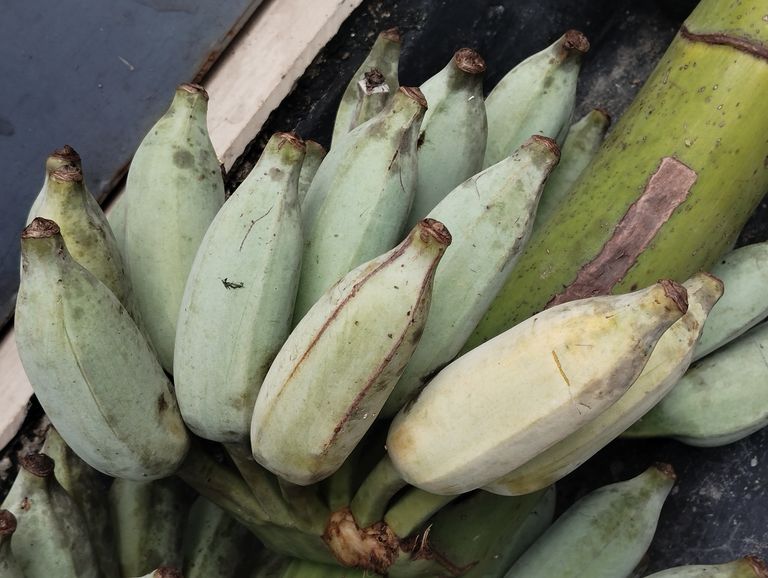
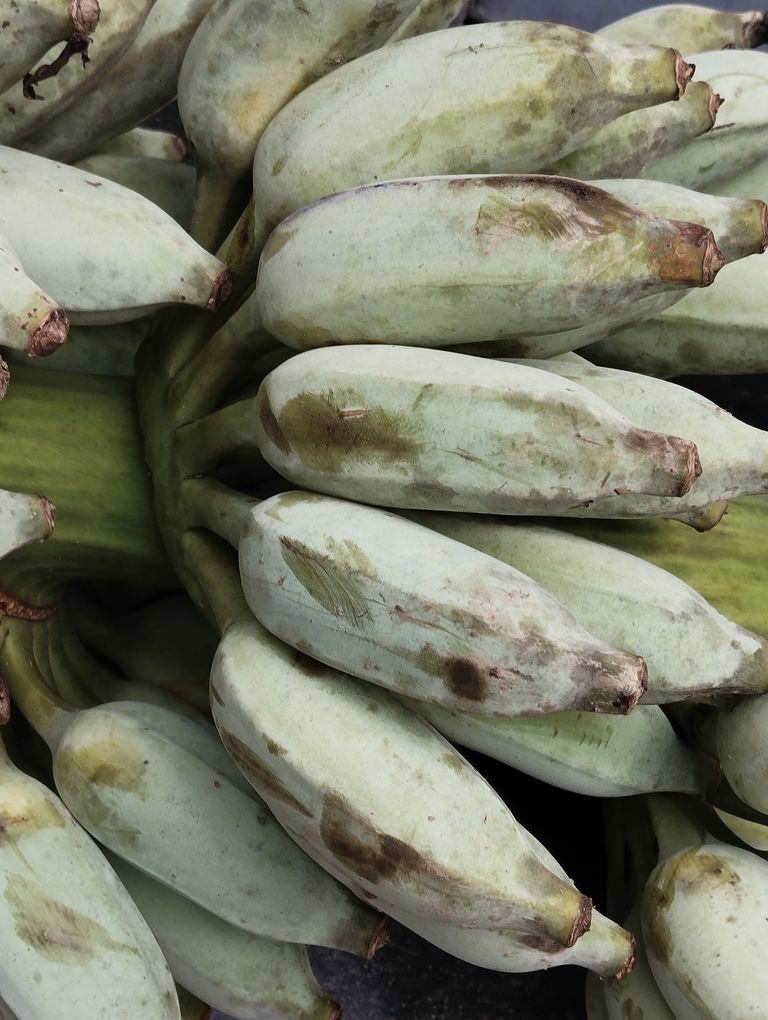
The Health Benefits of Eating Ripe Bananas
Bananas are one of the most popular fruits in the world, consumed by people of all ages due to their natural sweetness, creamy texture, and convenience. Whether eaten as a quick snack or incorporated into meals, ripe bananas are loaded with essential nutrients that can offer a wide array of health benefits. In this blog, we will explore the numerous advantages of consuming ripe bananas and how they can contribute to overall well-being.
- Rich in Nutrients
Ripe bananas are packed with essential vitamins and minerals that promote overall health. They are an excellent source of:
Vitamin C: Boosts the immune system, promotes healthy skin, and aids in tissue repair.
Vitamin B6: Supports brain function, helps in producing neurotransmitters like serotonin and dopamine, and plays a role in red blood cell production.
Potassium: Crucial for maintaining heart health, regulating blood pressure, and balancing fluids in the body.
Magnesium: Supports muscle and nerve function, helps maintain healthy bones, and regulates blood sugar levels.
Dietary Fiber: Essential for proper digestion and maintaining bowel regularity.
- Boosts Digestive Health
Ripe bananas are rich in soluble and insoluble fiber, which are both beneficial for digestive health. The soluble fiber found in bananas helps slow down digestion, allowing your body to absorb more nutrients from the food you eat. On the other hand, insoluble fiber helps in adding bulk to the stool, promoting regular bowel movements and preventing constipation.
Ripe bananas also contain pectin, a type of fiber that helps improve gut health. Pectin can act as a prebiotic, feeding the good bacteria in your gut and helping create a balanced and healthy gut microbiome.
- Promotes Heart Health
Bananas are well known for their high potassium content, a mineral that is vital for heart health. Potassium helps regulate blood pressure by counteracting the effects of sodium in the body. Consuming adequate potassium can reduce the risk of developing high blood pressure and, in turn, lower the chances of heart disease and stroke.
Furthermore, the fiber content in ripe bananas can also contribute to heart health by reducing cholesterol levels. Soluble fiber helps lower bad LDL cholesterol levels, while maintaining or improving good HDL cholesterol levels, which in turn helps reduce the risk of cardiovascular disease.
- Natural Energy Boost
Bananas are a great source of natural energy due to their high carbohydrate content. The natural sugars in ripe bananas—sucrose, fructose, and glucose—provide a quick energy boost. This makes bananas an excellent choice for athletes and active individuals looking for a healthy, easily digestible snack before or after workouts.
Ripe bananas also contain a good balance of simple and complex carbohydrates. While simple carbohydrates provide immediate energy, the fiber content in bananas ensures a steady release of energy over time, preventing spikes in blood sugar levels.
- Supports Mental Health and Mood
Ripe bananas are rich in vitamin B6, which plays a key role in the production of neurotransmitters such as serotonin and dopamine. These neurotransmitters help regulate mood, emotions, and sleep patterns. A deficiency in vitamin B6 can lead to feelings of irritability, depression, and fatigue.
Moreover, bananas contain tryptophan, an amino acid that is a precursor to serotonin, often referred to as the "feel-good" hormone. Eating ripe bananas can help improve mood, reduce stress, and promote relaxation.
- Helps Maintain a Healthy Weight
If you are looking to manage your weight, ripe bananas can be a great addition to your diet. They are relatively low in calories but rich in fiber, which helps you feel full for a longer period. The fiber in bananas slows down digestion and reduces hunger pangs, making it easier to control calorie intake.
Bananas are also a naturally sweet snack, making them a healthier alternative to sugary treats. Instead of reaching for processed snacks that are high in refined sugars and unhealthy fats, a ripe banana can satisfy your sweet tooth without adding excess calories.
- Improves Kidney Health
The potassium content in ripe bananas is not only beneficial for heart health but also plays a critical role in maintaining kidney health. Adequate potassium intake helps regulate the balance of fluids and electrolytes in the body, which is essential for healthy kidney function.
Studies have shown that people who consume potassium-rich foods, like bananas, have a lower risk of developing kidney stones. Bananas help prevent calcium from accumulating in the kidneys, which can lead to stone formation.
- Antioxidant Properties
Ripe bananas are rich in antioxidants, including dopamine and vitamin C, which help protect the body from free radical damage. Free radicals are unstable molecules that can cause cellular damage, leading to chronic diseases like cancer, heart disease, and neurodegenerative conditions.
The antioxidants in bananas help neutralize free radicals, reducing oxidative stress and inflammation in the body. This makes ripe bananas an excellent choice for supporting overall health and longevity.
- Supports Bone Health
While bananas are not particularly high in calcium, their high potassium and magnesium content contribute to strong bones. Potassium helps prevent the loss of calcium through urine, ensuring that more calcium remains available to strengthen bones.
Magnesium also plays an essential role in bone health, as it helps in the absorption of calcium and supports the production of bone-forming cells. Regular consumption of bananas can help maintain healthy bones, reducing the risk of osteoporosis and fractures.
- Aids in Skin Health
The high content of vitamin C and antioxidants in ripe bananas can also benefit skin health. Vitamin C is necessary for the production of collagen, a protein that keeps the skin firm, smooth, and youthful. Eating bananas can improve skin elasticity, reduce the appearance of fine lines and wrinkles, and promote a healthy glow.
Additionally, the antioxidants in bananas help protect the skin from the harmful effects of UV rays and environmental pollutants. Regular consumption of ripe bananas can contribute to a clear and radiant complexion.
Conclusion
Ripe bananas are a powerhouse of nutrition, offering a variety of health benefits that range from improved digestion to heart health and better mental well-being. Their natural sweetness, easy digestibility, and rich nutrient profile make them a perfect snack for people of all ages.
Whether you're looking to boost your energy levels, support your immune system, or improve your overall health, adding ripe bananas to your daily diet can make a significant difference. With their delicious taste and versatile uses, ripe bananas are truly a superfood that should not be overlooked.
So, the next time you reach for a snack, consider choosing a ripe banana to nourish your body and mind.
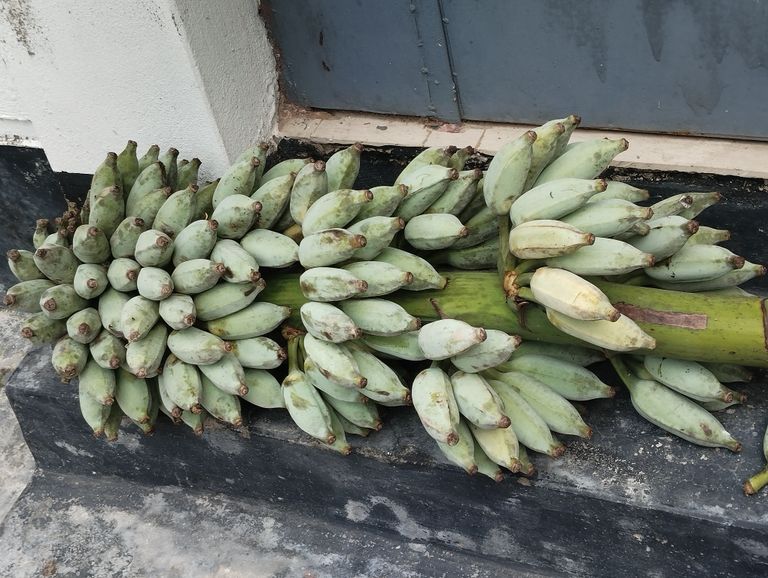
Mature Jute Cultivation Methods (Paka Gola Farming): A Comprehensive Guide
Introduction
Jute, often referred to as the "Golden Fiber" of Bangladesh and India, is one of the most versatile natural fibers used globally. Its demand spans across industries such as textiles, packaging, and various environmental applications due to its biodegradable nature. Paka Gola or mature jute cultivation focuses on harvesting the crop at its peak for fiber extraction, ensuring the best quality for industrial use.
This blog will delve into the ideal methods for cultivating mature jute (Paka Gola), covering key aspects such as soil preparation, seed selection, sowing, plant care, pest control, and harvesting.
Climate and Soil Requirements for Jute Cultivation
Jute requires specific climatic and soil conditions to thrive. Here are the primary conditions for optimal growth:
- Temperature and Rainfall: Jute is typically grown in warm and humid climates. The crop thrives in areas with a temperature range of 24°C to 37°C and requires 150-250 mm of rainfall spread over its growing season. Heavy rainfall followed by dry weather is ideal for its growth.
- Soil: Jute grows best in alluvial soils, which are rich in nutrients and moisture. Loamy or sandy loam soils with good water retention capacity are also suitable. Soil pH should ideally range between 6.5 to 7.5 for optimum growth.
- Topography: Low-lying plains with good drainage are ideal, as waterlogging can damage the crop. However, some varieties can withstand short periods of waterlogging.
Varieties of Jute
Jute is primarily cultivated in two varieties: Corchorus olitorius and Corchorus capsularis.
- Corchorus olitorius: Commonly referred to as Tossa jute, it produces a finer and stronger fiber and is grown in areas with higher rainfall.
- Corchorus capsularis: Also known as white jute, this variety is more adaptable to different soil types and is commonly grown in areas with moderate rainfall.
Choosing the right variety based on local climate and soil conditions is crucial for ensuring a high yield.
Land Preparation
Proper land preparation is essential to ensure the healthy growth of jute plants. Follow these steps to prepare the land:
- Plowing: The field should be plowed 3 to 4 times to create a fine tilth, which promotes root penetration and helps retain moisture. Deep plowing (up to 20-25 cm) is recommended to break soil compaction.
- Leveling: Level the field to ensure even water distribution and avoid waterlogging. Raised beds or ridges can be created in areas prone to heavy rainfall.
- Fertilization: Organic matter like farmyard manure or compost (5-10 tons per hectare) should be applied during land preparation. Additionally, balanced chemical fertilizers, including nitrogen (N), phosphorus (P), and potassium (K), are essential. A common fertilizer recommendation is 40 kg of nitrogen, 20 kg of phosphorus, and 20 kg of potassium per hectare.
Seed Selection and Sowing Techniques
Using high-quality seeds with good germination rates is essential for jute cultivation. Certified seeds from trusted sources should be preferred.
- Seed Rate: The recommended seed rate for jute is 6-8 kg per hectare for line sowing and 8-10 kg per hectare for broadcasting.
- Sowing Time: In most regions, sowing is done between March and May, depending on the onset of the monsoon. Early sowing helps in better growth and timely harvesting.
- Sowing Method:
Broadcasting: Seeds are spread evenly over the field. Though it is labor-intensive, it is suitable for small-scale farmers.
Line Sowing: This method ensures uniform plant spacing and makes weeding and pest control easier. The row-to-row spacing should be 25-30 cm, with 5-7 cm spacing between plants.
- Seed Treatment: Treating seeds with fungicides such as Thiram or Carbendazim helps protect them from seed-borne diseases. Soaking seeds in water for 12-24 hours before sowing ensures better germination.
Water Management and Irrigation
Jute requires adequate moisture throughout its growing season, especially during the initial stages of germination and growth. However, excess water can lead to diseases or poor growth.
- Irrigation: Irrigation should be done in areas where rainfall is insufficient. Light irrigation is required after sowing to ensure uniform germination. In dry areas, irrigate at intervals of 10-12 days.
- Drainage: Proper drainage systems should be established to prevent waterlogging during the rainy season.
Weed and Pest Management
Weeds can compete with jute for nutrients, water, and sunlight, so timely weeding is crucial.
- Weeding: The first weeding should be done 3-4 weeks after sowing. Subsequent weeding can be done every 15-20 days, depending on weed growth.
- Mulching: Applying organic mulch helps conserve soil moisture and suppresses weed growth.
- Pest Control: Jute crops are susceptible to pests such as jute stem weevil, jute hairy caterpillar, and aphids. Regular monitoring and early control measures, such as spraying neem oil or other biopesticides, can reduce pest infestation. If necessary, chemical insecticides like Malathion can be used, following recommended guidelines.
- Disease Management: Common diseases include root rot, stem rot, and wilting. To prevent these diseases, adopt good field hygiene and avoid waterlogging. If diseases appear, appropriate fungicides can be applied.
Growth Stages and Plant Care
Jute grows rapidly under favorable conditions and requires some essential care practices:
- Thinning: If sowing was done densely, thinning should be performed when the plants are 15-20 cm tall to ensure proper spacing and plant health.
- Top-Dressing: Apply additional nitrogen (20 kg per hectare) 30-35 days after sowing, particularly if growth appears stunted.
Harvesting Jute
For Paka Gola or mature jute cultivation, the right time to harvest is crucial to ensure the best fiber quality.
- Timing: Jute is usually ready for harvesting 120-150 days after sowing. The ideal time to harvest is when 50-60% of the plants start flowering, and the stems have turned golden-yellow. Early harvesting may lead to weaker fiber, while late harvesting can make the fiber coarse and difficult to extract.
- Method: Harvesting is done by cutting the plants close to the ground using a sickle. The plants are then bundled and left in the field for a day or two to wilt.
- Retting: Retting is the process of soaking jute bundles in water to separate the fiber from the stem. Bundles are submerged in slow-moving, clean water for 10-15 days, depending on the water temperature and quality. After retting, the fibers are extracted manually by stripping them from the stems.
Post-Harvest Processing and Storage
After fiber extraction, it is essential to ensure proper drying and storage to maintain quality.
- Drying: The fibers should be washed thoroughly and sun-dried for 2-3 days. They should be turned periodically to ensure even drying.
- Grading and Storage: The fibers are graded based on their color, strength, and fineness. Store the fibers in a cool, dry place to prevent moisture absorption and mold formation.
Conclusion
Mature jute cultivation (Paka Gola) involves careful planning, timely execution, and attention to detail in every step of the farming process. By following the outlined practices—selecting the right variety, ensuring proper soil preparation, timely irrigation, weed and pest management, and careful harvesting—farmers can achieve a high-quality yield. Jute remains a crucial economic crop, and adopting modern farming techniques can increase both productivity and profitability for farmers.
